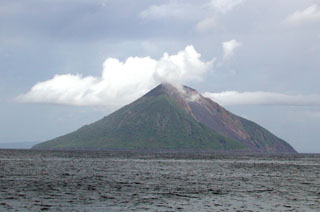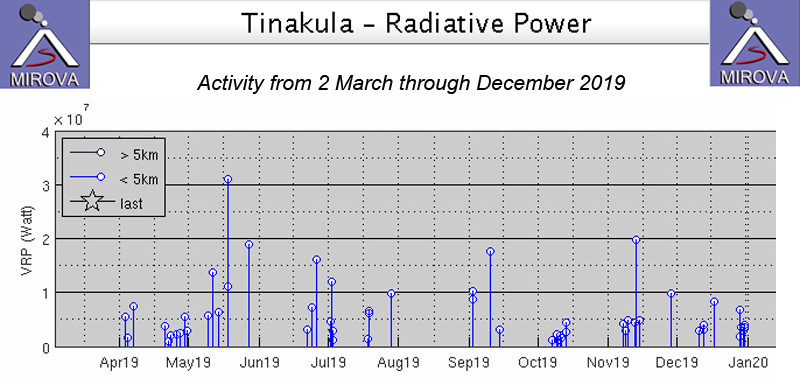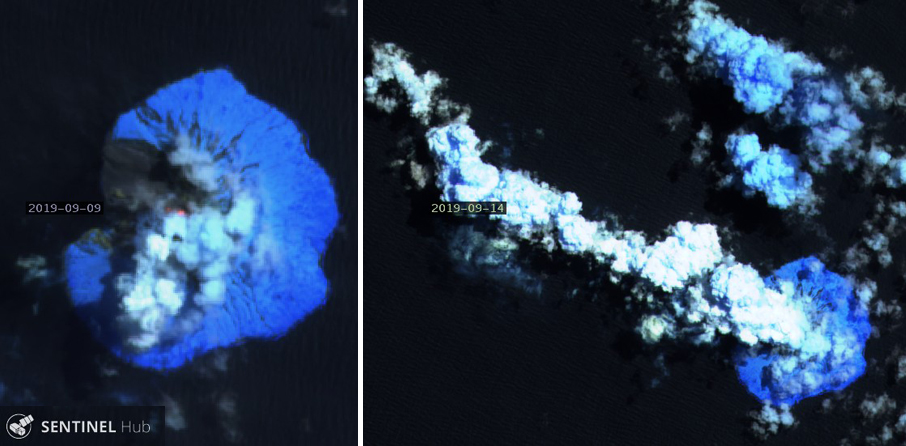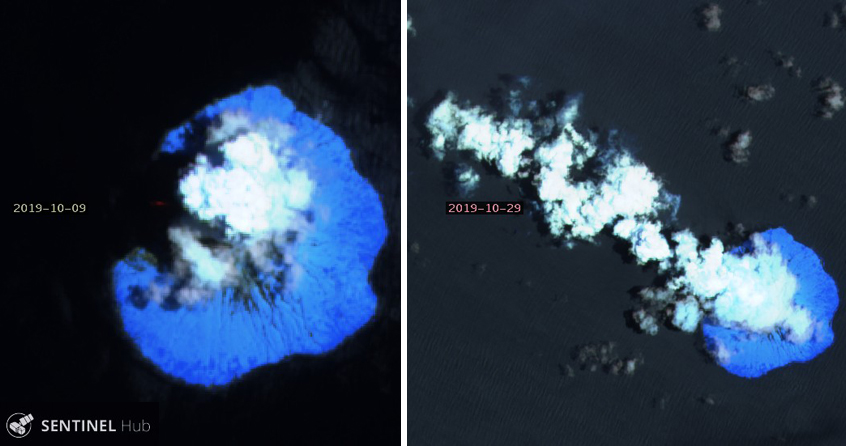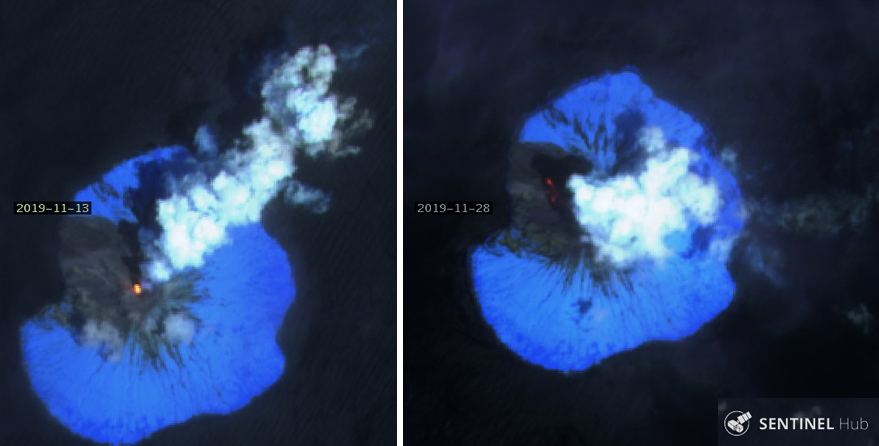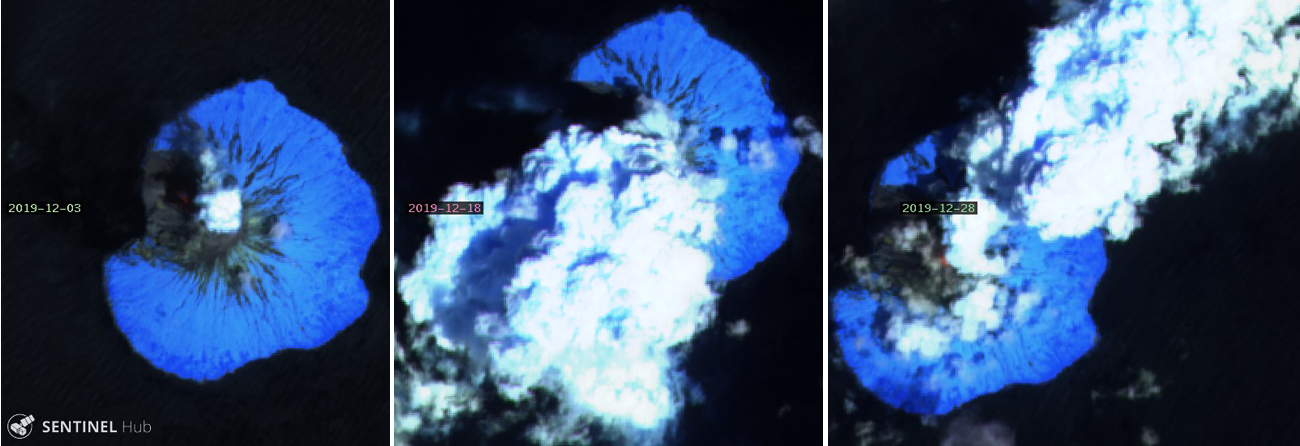Report on Tinakula (Solomon Islands) — January 2020
Bulletin of the Global Volcanism Network, vol. 45, no. 1 (January 2020)
Managing Editor: Edward Venzke.
Edited by A. Elizabeth Crafford.
Tinakula (Solomon Islands) Intermittent thermal activity suggests ongoing eruption, July-December 2019
Please cite this report as:
Global Volcanism Program, 2020. Report on Tinakula (Solomon Islands) (Crafford, A.E., and Venzke, E., eds.). Bulletin of the Global Volcanism Network, 45:1. Smithsonian Institution. https://doi.org/10.5479/si.GVP.BGVN202001-256010
Tinakula
Solomon Islands
10.386°S, 165.804°E; summit elev. 796 m
All times are local (unless otherwise noted)
Remote Tinakula lies 100 km NE of the Solomon Trench at the N end of the Santa Cruz Islands, which are part of the South Pacific country of the Solomon Islands located 400 km to the W. It has been uninhabited since an eruption with lava flows and ash explosions in 1971 when the small population was evacuated (CSLP 87-71). The nearest communities live on Te Motu (Trevanion) Island (about 30 km S), Nupani (40 km N), and the Reef Islands (60 km E); residents occasionally report noises from explosions at Tinakula. Ashfall from larger explosions has historically reached these islands. A large ash explosion during 21-26 October 2017 was a short-lived event; renewed thermal activity was detected beginning in December 2018 and intermittently throughout 2019. This report covers the ongoing activity from July-December 2019. Since ground-based observations are rarely available, satellite thermal and visual data are the primary sources of information.
MIROVA thermal anomaly data indicated intermittent but ongoing thermal activity at Tinakula during July-December 2019 (figure 35). It was characterized by pulses of multiple alerts of varying intensities for several days followed by no activity for a few weeks.
Observations using Sentinel-2 satellite imagery were often prevented by clouds during July, but two MODVOLC thermal alerts on 2 July 2019 corresponded to MIROVA thermal activity on that date. No thermal anomalies were reported by MIROVA during August 2019, but Sentinel-2 satellite images showed dense steam plumes drifting away from the summit on four separate dates (figure 36). Two distinct thermal anomalies appeared in infrared imagery on 9 September, and a dense steam plume drifted about 10 km NW on 14 September (figure 37).
During October 2019 steam emissions were captured in four clear satellite images; a weak thermal anomaly was present on the W flank on 9 October (figure 38). MODVOLC recorded a single thermal alert on 9 November. Stronger thermal anomalies appeared twice during November in satellite images. On 13 November a strong anomaly was present at the summit in Sentinel-2 imagery; it was accompanied by a dense steam plume drifting NE from the hotspot. On 28 November two thermal anomalies appeared part way down the upper NW flank (figure 39). Thermal imagery on 3 December suggested that a weak anomaly remained on the NW flank in a similar location; a dense steam plume rose above the summit, drifting slightly SW on 18 December (figure 40). A thermal anomaly at the summit on 28 December was accompanied by a dense steam plume and corresponded to multiple MIROVA thermal anomalies at the end of December.
Geological Summary. The small 3.5-km-wide island of Tinakula is the exposed summit of a massive stratovolcano at the NW end of the Santa Cruz islands. It has a breached summit crater that extends from the summit to below sea level. Landslides enlarged this scarp in 1965, creating an embayment on the NW coast. The Mendana cone is located on the SE side. The dominantly andesitic volcano has frequently been observed in eruption since the era of Spanish exploration began in 1595. In about 1840, an explosive eruption apparently produced pyroclastic flows that swept all sides of the island, killing its inhabitants. Recorded eruptions have frequently originated from a cone constructed within the large breached crater. These have left the upper flanks and the steep apron of lava flows and volcaniclastic debris within the breach unvegetated.
Information Contacts: MIROVA (Middle InfraRed Observation of Volcanic Activity), a collaborative project between the Universities of Turin and Florence (Italy) supported by the Centre for Volcanic Risk of the Italian Civil Protection Department (URL: http://www.mirovaweb.it/); Hawai'i Institute of Geophysics and Planetology (HIGP) - MODVOLC Thermal Alerts System, School of Ocean and Earth Science and Technology (SOEST), Univ. of Hawai'i, 2525 Correa Road, Honolulu, HI 96822, USA (URL: http://modis.higp.hawaii.edu/); Sentinel Hub Playground (URL: https://www.sentinel-hub.com/explore/sentinel-playground).

